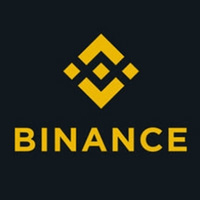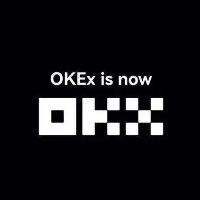-
List of historical ups and downs of Bitcoin halving
-
Date:2024-08-27 16:25:38 Channel:Trade Read:
Bitcoin halving historical ups and downs revealed
In the past decade, Bitcoin, as a representative of digital currency, has experienced turbulent changes and attracted the attention of countless investors around the world. One of its core mechanisms, the halving event, has become a hot topic in the market. Halving not only affects the supply of Bitcoin, but also causes great price fluctuations in each history. This article will explore the historical rise and fall records of Bitcoin halving in depth, and help readers better understand this phenomenon through data and case analysis.
The Bitcoin halving event refers to the halving of Bitcoin's block reward after every 210,000 blocks are mined. This mechanism was originally designed to control the total supply of Bitcoin and maintain its scarcity. The total supply of Bitcoin is limited to 21 million, which means that as time goes by, the difficulty of mining increases and the reward decreases, which will eventually lead to the generation of new Bitcoins approaching zero. This mechanism not only affects the income of miners, but also directly affects the supply and demand relationship in the market, thereby causing price fluctuations.
First halving: November 28, 2012
The first Bitcoin halving took place on November 28, 2012. At that time, the Bitcoin mining reward was reduced from 50 BTC to 25 BTC. Before the halving, the price of Bitcoin was about $5 at the beginning of 2012, and in the months before the halving, the price began to gradually climb, and finally reached the level of $12 on the eve of the halving. After the halving, the market responded enthusiastically, and the price rose rapidly in early 2013, reaching a peak of $266. The increase at this stage is amazing.
Behind this phenomenon, the market's understanding of Bitcoin has gradually deepened, and more and more investors have begun to pay attention to and invest in Bitcoin. Media reports have also played a role in fueling this process, attracting more attention. Investors generally believe that halving will lead to increased scarcity of Bitcoin, and the price will naturally rise.
Second halving: July 9, 2016
The second halving occurred on July 9, 2016, when the block reward was reduced from 25 BTC to 12.5 BTC. During this period, the price of Bitcoin experienced a significant rise. In early 2016 before the halving, the price was about $400, and on the eve of the halving, the price had soared to $700. In the months after the halving, the price of Bitcoin continued to rise, eventually reaching an all-time high of nearly $20,000 in December 2017.
The reason for this wave of rise is not only the direct impact of halving, but also due to the market's growing recognition of Bitcoin as digital gold. More and more institutional investors are entering the market, driving the price of Bitcoin soaring. At the same time, the application scenarios of blockchain technology are gradually increasing, further enhancing the value of Bitcoin.
Third halving: May 11, 2020
The third halving on May 11, 2020, reduced the block reward from 12.5 BTC to 6.25 BTC. Before this round of halving, the price of Bitcoin was relatively stable, around $8,000. However, after the halving, the price rebounded rapidly, and in December 2020, the price of Bitcoin reached nearly $30,000, setting a record high.
In the context of this round of halving, the global economic uncertainty caused by the epidemic has led investors to seek safe-haven assets, and Bitcoin has therefore received more and more attention. In addition, the rise of emerging applications such as DeFi (decentralized finance) and NFT (non-fungible tokens) has also provided new support for the value of Bitcoin. Investors' demand for Bitcoin continues to rise, further driving up prices.
Halving Impact on the Market
Through these halving events, we can see that the fluctuation of Bitcoin prices is closely related to halving. However, the market reaction is not determined solely by the halving event itself. Market sentiment, macroeconomic environment, policy changes and other factors also play an important role. For example, before the halving in 2020, the global economy was severely hit by the epidemic, which led to a decline in investors' confidence in traditional assets and increased investment in digital assets such as Bitcoin.
At the same time, as Bitcoin becomes more popular, the structure of market participants is also changing. From the initial miners and a very small number of investors to today's institutional investors, funds, and even national-level participants, the influence of different market players on prices has gradually increased. This diversified structure makes the volatility of the Bitcoin market more complex, and the impact of the halving event has become more difficult to predict.
FUTURE HALVATION OUTLOOK
Bitcoin's next halving is expected to occur in 2024, when the block reward will be reduced to 3.125 BTC. Many analysts believe that this could trigger a new round of price increases. However, market uncertainty remains, especially as regulatory policies continue to change, and investors need to remain vigilant.
From the historical data, halving events are often accompanied by sharp price fluctuations, but this does not mean that every halving will lead to price increases. Market sentiment, technological progress, policy environment and other factors may have an impact on prices. Therefore, when considering participating in the Bitcoin market, investors should comprehensively analyze various factors, rather than just relying on the halving event.
Summary and Thoughts
The historical ups and downs of Bitcoin halving provide us with valuable market observation perspectives. Each halving is not only an adjustment to the Bitcoin supply, but also a concentrated reflection of investor sentiment and market expectations. As the Bitcoin market continues to develop, investors need to have a deeper understanding of this mechanism in order to make more informed decisions in a complex market environment.
Future investors should not only pay attention to the direct impact of halving, but also have insight into the deep-seated reasons behind market changes. The story of Bitcoin continues, waiting for more exploration and discovery.
The four most famous international exchanges:
Binance INTL
OKX INTL
Gate.io INTL
Huobi INTL




China Line APP DL China Line APP DL
China Line APP DL
China Line APP DL
Note: The above exchange logo is the official website registration link, and the text is the APP download link.

Speaking of Bitcoin halving, this term is popular every four years. For veterans in the cryptocurrency circle, this term is not unfamiliar, but for newcomers to the cryptocurrency circle, this term may still be unfamiliar. Halving comes from the Old English word Half, which means to turn the original thing into half. In the cryptocurrency circle, halving means that the total reward of each mining is reduced by half. After understanding Bitcoin halving, let's get back to the topic. What is the historical rise and fall record of Bitcoin halving? Next, the editor of the currency circle will tell you in detail about the historical rise and fall record of Bitcoin halving.
Bitcoin halving historical rise and fall records
Since the creation of the Bitcoin blockchain on January 3, 2009, it has experienced three halvings.
First halving: November 28, 2012
Second halving: July 9, 2016
The third halving: May 12, 2020
With the arrival of the third halving, the number of Bitcoin wallets has increased significantly compared to the second halving, especially the number of wallets with balances below 0.01BTC has increased the most.
The number of wallets with a balance of less than 0.01 BTC has increased by 235% since the last halving, to over 10 million.
Addresses with balances between 0.01 BTC and 0.1 BTC increased by 204%.
The number of addresses holding more than 0.1 BTC but less than one Bitcoin increased by 142%.
The number of whale addresses with more than 1,000 BTC also grew by 13.2%, but the number of addresses with balances between 100-1,000 BTC only grew by 6.3%.
Bitcoin mining began in January 2009 and was halved on November 28, 2012. In the year before the halving, BTC ushered in a bull market, with the exchange rate of 10,000 bitcoins for two pizzas rising to $13 per pizza.
After the halving in 2012, there was another bull market in April 2013, rising from $13 to around $250. Then there was an adjustment from April to October 2013. After the adjustment, there was another bull market, rising from $100 to around $1,100, a hundred-fold increase. From January 2014, the entire 2014 was a bear market, falling until January 2015. From January to August 2015, it was still in a consolidation phase.
--
Bullish market. From 2014 to 2015, it was a bear market for a full year and a half. From the end of August 2015 to December 2017, it rose for two consecutive years, with the price rising from $200 to $19,891 in December 2017. From December 2017 to February 2019, BTC went through a perfect bear market for more than two years. From February 2019 to date, BTC has been in another bull market, rising from $3,400 to $14,000.
From the above data, we can see that BTC halved in 2012, and there was a three-year bull market from 2011 to 2013. BTC halved in 2016, and there was a three-year bull market from 2015 to 2017. The halving will happen in 2020, and the bull market should last from 2019 to 2021. Judging from the current price trend, it is very consistent with the rhythm of the previous two halvings, so we have reason to believe that the halving bull market will exist and has already begun.
Reasons for Bitcoin halving:
As the leader of virtual currencies, a block of Bitcoin is mined every ten minutes or so, and a certain amount of Bitcoin will be rewarded for mining a block.
Satoshi Nakamoto stipulated in the Bitcoin protocol:
1. The total amount of Bitcoin is limited to 21 million;
2. The number of bitcoins rewarded for mining is halved every 210,000 blocks.
Assuming that an average of 6 blocks are mined per hour, according to Satoshi Nakamoto, the reward is halved every time 210,000 blocks are mined, so the halving will occur approximately every four years. Until the total number reaches 21 million. The four-year halving rule is based on supply and demand considerations. If a large number of Bitcoins are produced without scruples and restrictions in a short period of time, the circulation of Bitcoin will increase and eventually become worthless. This can also be seen from the issuance of legal currency. The RMB cannot be issued without restrictions, otherwise the depreciation rate will accelerate rapidly.
According to this algorithm, the total amount of Bitcoin is about 21 million (to be exact, 20999999.9769), and it will be issued in 2140. Ethereum founder Vitalik Buterin once wrote in an article about the reason for slowing down the issuance of Bitcoin by halving: the main reason is to effectively control inflation. The biggest problem with traditional legal currency is that it is controlled by the central bank. The central bank can issue currency at will. If it issues too much, the currency will depreciate rapidly according to the supply and demand relationship.
In fact, Bitcoin and gold are similar to each other. The amount of gold on the entire earth is very limited. Once a piece of gold is dug, the remaining gold will become less and less, and it will become more and more difficult to dig. Therefore, gold can be used as a metal currency to preserve value. It has a history of more than 6,000 years of value storage. Let us wait and see whether Bitcoin can be like gold!
The above is the relevant content of the historical rise and fall records of Bitcoin halving. In fact, Bitcoin halving will cause a sudden change in the break-even cost of Bitcoin. Generally speaking, the break-even cost refers to the price of the currency when the income obtained by the miners in the normal operation of the mining farm is not enough to pay for the electricity consumed by mining. It can also be understood as the mining cost price or shutdown price of a certain currency. At this time, the mining profit is 0. If the currency price falls below the shutdown price, then mining will naturally lose money. If you want to know more about related issues, you can pay attention to the subsequent reports of the currency circle!
I'll answer.
Articles related to tags
- US Senator Bitcoin can vote with its feet Don’t create a hosti
- How to trade OK Wallet coins OK Wallet Trading Tutorial
- Taking stock of the mysterious creators of Bitcoin Who are thes
- How to download the Pancake Exchange APP Pancakeswap official w
- What does Bitcoin quarterly contract mean Popular explanations
- Hong Shao Rou HSR Comprehensive Introduction to Trading Platfo
- Being bombarded by Ponzi scheme and environmental public opinion
- Rich Dad author Global economy may collapse Bitcoin is worth $
- Bitcoin price dropped by half What are Bitcoin miners and minin
- What should I do if my Bitcoin position is liquidated Do I have
user
2480
Ask
979K+
reading
0
Answer
3H+
Upvote
2H+
Downvote
-
 Artery Network(ARTR幣)在那裏挖?ArteryNetwork(ARTR幣)是一種新興的加密貨幣,它的採礦過程與比特幣和以太幣等其他加密貨幣類似。ARTR幣的挖礦過程是通過計算機資源解決複雜的數學問題來獲取新的幣。這一過程需要大量的計算能力和電力,因此挖礦者需要投入相應的硬件和電力成本。 A2025-03-26 21:33:09
Artery Network(ARTR幣)在那裏挖?ArteryNetwork(ARTR幣)是一種新興的加密貨幣,它的採礦過程與比特幣和以太幣等其他加密貨幣類似。ARTR幣的挖礦過程是通過計算機資源解決複雜的數學問題來獲取新的幣。這一過程需要大量的計算能力和電力,因此挖礦者需要投入相應的硬件和電力成本。 A2025-03-26 21:33:09 -
 Litbinex Coin(LTB幣)走勢如何LitbinexCoin LTB幣 作為一種加密貨幣,其價格走勢取決於市場供求和投資者對其價值的認知。在過去的一段時間裡,LTB幣的價格可能出現了一些波動,這可能是由於市場情緒、新聞事件或技術因素所引起的。 在過去的幾個月中,全球加密貨幣市場經歷了一些波動2025-03-26 21:33:03
Litbinex Coin(LTB幣)走勢如何LitbinexCoin LTB幣 作為一種加密貨幣,其價格走勢取決於市場供求和投資者對其價值的認知。在過去的一段時間裡,LTB幣的價格可能出現了一些波動,這可能是由於市場情緒、新聞事件或技術因素所引起的。 在過去的幾個月中,全球加密貨幣市場經歷了一些波動2025-03-26 21:33:03 -
 Starbound(SBD幣)最新動態SBD幣,即Starbound,是一种基于区块链技术的加密货币,旨在为用户提供一种快速、安全和低成本的支付方式。最近,Starbound团队宣布了一系列重大动态,以提升其在加密货币市场的地位和影响力。 首先,Starbound团队宣布他们已经与几家知名的加2025-03-26 21:32:59
Starbound(SBD幣)最新動態SBD幣,即Starbound,是一种基于区块链技术的加密货币,旨在为用户提供一种快速、安全和低成本的支付方式。最近,Starbound团队宣布了一系列重大动态,以提升其在加密货币市场的地位和影响力。 首先,Starbound团队宣布他们已经与几家知名的加2025-03-26 21:32:59 -
 Catcoin(CATS幣)最新新聞最新消息指出,Catcoin(CATS幣)在近期取得了巨大的成功,吸引了越來越多投資者的關注。這種加密貨幣是專為貓主人和貓愛好者而設計的,旨在建立一個支持貓咪社群的加密支付系統。 Catcoin的價值一直在不斷上漲,吸引了許多散戶和機構投資者的投入。這種加2025-03-26 21:32:54
Catcoin(CATS幣)最新新聞最新消息指出,Catcoin(CATS幣)在近期取得了巨大的成功,吸引了越來越多投資者的關注。這種加密貨幣是專為貓主人和貓愛好者而設計的,旨在建立一個支持貓咪社群的加密支付系統。 Catcoin的價值一直在不斷上漲,吸引了許多散戶和機構投資者的投入。這種加2025-03-26 21:32:54 -
 YFPI(YFPI幣)最新資訊YFPIYFPI幣是一種加密貨幣,它是由一個名為YFPI的去中心化金融平台所發行的。YFPI的目標是成為一個具有高度流動性和穩定價值的加密貨幣,讓用戶可以更方便地進行交易和支付。 最近,YFPI的價格一直在波動,受到市場情緒和投資者信心的影響。儘管如此,Y2025-03-26 21:32:49
YFPI(YFPI幣)最新資訊YFPIYFPI幣是一種加密貨幣,它是由一個名為YFPI的去中心化金融平台所發行的。YFPI的目標是成為一個具有高度流動性和穩定價值的加密貨幣,讓用戶可以更方便地進行交易和支付。 最近,YFPI的價格一直在波動,受到市場情緒和投資者信心的影響。儘管如此,Y2025-03-26 21:32:49 -
 WaveEduCoin(WEC幣)是詐騙?WaveEduCoinWEC幣是一個虛擬貨幣項目,宣稱旨在為教育領域提供解決方案。然而,有人對這個項目提出了質疑,認為WaveEduCoinWEC幣可能是一個詐騙項目。 首先,WaveEduCoinWEC幣的團隊背景和專業性受到質疑。許多投資者發現他們在官2025-03-26 21:32:43
WaveEduCoin(WEC幣)是詐騙?WaveEduCoinWEC幣是一個虛擬貨幣項目,宣稱旨在為教育領域提供解決方案。然而,有人對這個項目提出了質疑,認為WaveEduCoinWEC幣可能是一個詐騙項目。 首先,WaveEduCoinWEC幣的團隊背景和專業性受到質疑。許多投資者發現他們在官2025-03-26 21:32:43 -
 Pegs Shares(PEGS幣)符合當地法律嗎PegsShares(PEGS幣)是一種加密貨幣,目前在市場上並無法得到明確的法律規範。然而,對於加密貨幣的法律規定在各國各地可能有所不同,因此在使用和投資這種加密貨幣時需要謹慎對待。 在一些國家,加密貨幣被視為合法的貨幣形式,並受到相應的法律保護。然而,2025-03-26 21:32:36
Pegs Shares(PEGS幣)符合當地法律嗎PegsShares(PEGS幣)是一種加密貨幣,目前在市場上並無法得到明確的法律規範。然而,對於加密貨幣的法律規定在各國各地可能有所不同,因此在使用和投資這種加密貨幣時需要謹慎對待。 在一些國家,加密貨幣被視為合法的貨幣形式,並受到相應的法律保護。然而,2025-03-26 21:32:36 -
 JUS Token(JUS幣)總部在那JUSTokenJUS幣是一家总部位于新加坡的加密货币公司。新加坡是一个国际金融中心,拥有完善的法律体系和监管机制,吸引了许多加密货币和区块链公司选择在这里设立总部。 JUSTokenJUS幣总部位于新加坡的好处包括: 1 法律体系完善:新加坡的法律体系健2025-03-26 21:32:30
JUS Token(JUS幣)總部在那JUSTokenJUS幣是一家总部位于新加坡的加密货币公司。新加坡是一个国际金融中心,拥有完善的法律体系和监管机制,吸引了许多加密货币和区块链公司选择在这里设立总部。 JUSTokenJUS幣总部位于新加坡的好处包括: 1 法律体系完善:新加坡的法律体系健2025-03-26 21:32:30 -
 I-COIN(ICN幣)非法傳銷ICN幣是一種加密貨幣,類似於比特幣或以太幣,通過區塊鏈技術進行交易和存儲價值。然而,近年來有一些人利用ICN幣進行非法傳銷活動,給投資者帶來了風險和損失。 非法傳銷是指通過招聘下線、忽悠投資者參與項目來賺取高額回報的行為。在ICN幣的非法傳銷中,一些不法2025-03-26 21:32:27
I-COIN(ICN幣)非法傳銷ICN幣是一種加密貨幣,類似於比特幣或以太幣,通過區塊鏈技術進行交易和存儲價值。然而,近年來有一些人利用ICN幣進行非法傳銷活動,給投資者帶來了風險和損失。 非法傳銷是指通過招聘下線、忽悠投資者參與項目來賺取高額回報的行為。在ICN幣的非法傳銷中,一些不法2025-03-26 21:32:27 -
 Glitch Protocol(GLCH幣)交易合法不GlitchProtocol(GLCH幣)是一種加密貨幣,其交易合法性取決於當地政府對加密貨幣的規定和監管。在一些國家,加密貨幣被視為合法的資產,可以自由交易和使用。然而,在一些國家,政府可能對加密貨幣實施嚴格的監管措施,甚至禁止其交易。 若要確定Glit2025-03-26 21:32:20
Glitch Protocol(GLCH幣)交易合法不GlitchProtocol(GLCH幣)是一種加密貨幣,其交易合法性取決於當地政府對加密貨幣的規定和監管。在一些國家,加密貨幣被視為合法的資產,可以自由交易和使用。然而,在一些國家,政府可能對加密貨幣實施嚴格的監管措施,甚至禁止其交易。 若要確定Glit2025-03-26 21:32:20
-
 Cat(CAT幣)的交易量CAT幣是一種虛擬貨幣,目前在加密貨幣市場中交易量相對較小。然而,隨著加密貨幣市場的不斷發展和成長,CAT幣的交易量也在逐漸增加。 CAT幣的交易量取決於市場需求和供應情況,以及交易所的交易活動。一般來說,CAT幣的交易量可能會受到市場情緒、新聞事件、技術2025-03-26 21:34:43
Cat(CAT幣)的交易量CAT幣是一種虛擬貨幣,目前在加密貨幣市場中交易量相對較小。然而,隨著加密貨幣市場的不斷發展和成長,CAT幣的交易量也在逐漸增加。 CAT幣的交易量取決於市場需求和供應情況,以及交易所的交易活動。一般來說,CAT幣的交易量可能會受到市場情緒、新聞事件、技術2025-03-26 21:34:43 -
 紅域(巧克力)(QKL幣)涉嫌詐騙紅域(巧克力)(QKL幣)是一種虛擬貨幣,近期涉嫌詐騙的傳聞不斷。根據一些用戶的投訴和報導,有人聲稱在投資這個虛擬貨幣時遭受了損失,而且無法取回投資的資金。 在這種情況下,投資者應該格外小心,避免受騙。首先,要確保所投資的虛擬貨幣是合法的,有穩定的背景和可2025-03-26 21:34:37
紅域(巧克力)(QKL幣)涉嫌詐騙紅域(巧克力)(QKL幣)是一種虛擬貨幣,近期涉嫌詐騙的傳聞不斷。根據一些用戶的投訴和報導,有人聲稱在投資這個虛擬貨幣時遭受了損失,而且無法取回投資的資金。 在這種情況下,投資者應該格外小心,避免受騙。首先,要確保所投資的虛擬貨幣是合法的,有穩定的背景和可2025-03-26 21:34:37 -
 Yukon(YUKON幣)倒閉了最近有傳聞指出,Yukon(YUKON幣)可能即將倒閉。這個消息引起了市場的驚慌和困憂,許多投資者和持有者都在擔心他們的資金和投資是否會受到影響。 Yukon是一種加密貨幣,最初是在2017年推出的。它在推出後吸引了很多投資者和用戶,因為它的技術和應用前景2025-03-26 21:34:33
Yukon(YUKON幣)倒閉了最近有傳聞指出,Yukon(YUKON幣)可能即將倒閉。這個消息引起了市場的驚慌和困憂,許多投資者和持有者都在擔心他們的資金和投資是否會受到影響。 Yukon是一種加密貨幣,最初是在2017年推出的。它在推出後吸引了很多投資者和用戶,因為它的技術和應用前景2025-03-26 21:34:33 -
 AGPC TOKEN(AGPC幣)不合法AGPCTOKENAGPC幣 是一种虚拟货币,它并不是任何国家的法定货币,也不受到任何监管机构的监管。因此,AGPCTOKEN 不具备合法货币的属性,也没有法律地位。在很多国家和地区,虚拟货币并不被认可为合法支付工具,因此使用AGPCTOKEN 进行交易可2025-03-26 21:34:27
AGPC TOKEN(AGPC幣)不合法AGPCTOKENAGPC幣 是一种虚拟货币,它并不是任何国家的法定货币,也不受到任何监管机构的监管。因此,AGPCTOKEN 不具备合法货币的属性,也没有法律地位。在很多国家和地区,虚拟货币并不被认可为合法支付工具,因此使用AGPCTOKEN 进行交易可2025-03-26 21:34:27 -
 RentalChain(RNL幣)在中國禁止RentalChainRNL幣是一种基于区块链技术的租赁服务平台的代币,旨在通过区块链技术实现租赁行业的数字化和智能化。然而,由于中国政府对加密货币的监管政策非常严格,目前RentalChain在中国被禁止。 中国政府自2017年开始加强对加密货币的监管,2025-03-26 21:34:19
RentalChain(RNL幣)在中國禁止RentalChainRNL幣是一种基于区块链技术的租赁服务平台的代币,旨在通过区块链技术实现租赁行业的数字化和智能化。然而,由于中国政府对加密货币的监管政策非常严格,目前RentalChain在中国被禁止。 中国政府自2017年开始加强对加密货币的监管,2025-03-26 21:34:19 -
 FlapXCoin(FLAPX幣)是空氣幣FlapXCoinFLAPX幣並不是空氣幣,而是一種虛擬加密貨幣。空氣幣通常指的是沒有實際的價值或用途,只是為了炒作而被創建出來的虛擬貨幣。然而,FlapXCoin是一種經過加密技術保護的數字貨幣,具有真實的價值和用途。 FlapXCoin是通過區塊鏈技術2025-03-26 21:34:13
FlapXCoin(FLAPX幣)是空氣幣FlapXCoinFLAPX幣並不是空氣幣,而是一種虛擬加密貨幣。空氣幣通常指的是沒有實際的價值或用途,只是為了炒作而被創建出來的虛擬貨幣。然而,FlapXCoin是一種經過加密技術保護的數字貨幣,具有真實的價值和用途。 FlapXCoin是通過區塊鏈技術2025-03-26 21:34:13 -
 CPUcoin(CPU幣)是什麽CPUcoin是一种基于区块链技术的加密货币,旨在通过共享计算资源来提高计算机性能和效率。CPUcoin的目标是利用闲置的计算资源,例如个人计算机或数据中心的服务器,来为用户提供更好的计算服务。CPUcoin的核心概念是将计算资源共享化,使得用户可以通过共2025-03-26 21:34:07
CPUcoin(CPU幣)是什麽CPUcoin是一种基于区块链技术的加密货币,旨在通过共享计算资源来提高计算机性能和效率。CPUcoin的目标是利用闲置的计算资源,例如个人计算机或数据中心的服务器,来为用户提供更好的计算服务。CPUcoin的核心概念是将计算资源共享化,使得用户可以通过共2025-03-26 21:34:07 -
 XMZ(XMZ幣)APP下載地址XMZ(XMZ幣)是一種加密貨幣,它是基於區塊鏈技術的去中心化數字貨幣。如果您想要使用XMZ幣進行交易或投資,您可以下載XMZ的官方應用程序來管理您的資產。 XMZ應用程序可以讓您輕鬆地查看您的賬戶餘額、進行轉賬和收款。同時,您還可以通過應用程序查看最新的2025-03-26 21:34:02
XMZ(XMZ幣)APP下載地址XMZ(XMZ幣)是一種加密貨幣,它是基於區塊鏈技術的去中心化數字貨幣。如果您想要使用XMZ幣進行交易或投資,您可以下載XMZ的官方應用程序來管理您的資產。 XMZ應用程序可以讓您輕鬆地查看您的賬戶餘額、進行轉賬和收款。同時,您還可以通過應用程序查看最新的2025-03-26 21:34:02 -
 Sergey Save Link(SSL幣)近期會暴跌?近期,有一些市場分析師對SergeySaveLink SSL幣未來的走勢感到悲觀,認為它可能會暴跌。這種預測主要基於幣值波動性高和市場不穩定的情況下,SSL幣可能會受到影響而下跌。 首先,SSL幣是一種虛擬加密貨幣,價值受到市場供需和投資者情緒的影響。在市2025-03-26 21:33:58
Sergey Save Link(SSL幣)近期會暴跌?近期,有一些市場分析師對SergeySaveLink SSL幣未來的走勢感到悲觀,認為它可能會暴跌。這種預測主要基於幣值波動性高和市場不穩定的情況下,SSL幣可能會受到影響而下跌。 首先,SSL幣是一種虛擬加密貨幣,價值受到市場供需和投資者情緒的影響。在市2025-03-26 21:33:58 -
 Authoreon(AUN幣)近期會暴漲?近期,人們對Authoreon(AUN幣)的關注度正在逐漸增加,這可能導致其價格走勢出現一定程度的波動。有一些人認為,Authoreon的價格可能會出現暴漲的情況,這主要是基於以下幾個原因: 首先,Authoreon是一個新興的加密貨幣項目,它擁有一個強大2025-03-26 21:33:53
Authoreon(AUN幣)近期會暴漲?近期,人們對Authoreon(AUN幣)的關注度正在逐漸增加,這可能導致其價格走勢出現一定程度的波動。有一些人認為,Authoreon的價格可能會出現暴漲的情況,這主要是基於以下幾個原因: 首先,Authoreon是一個新興的加密貨幣項目,它擁有一個強大2025-03-26 21:33:53


 Bitcoin
Bitcoin Binance幣安
Binance幣安


